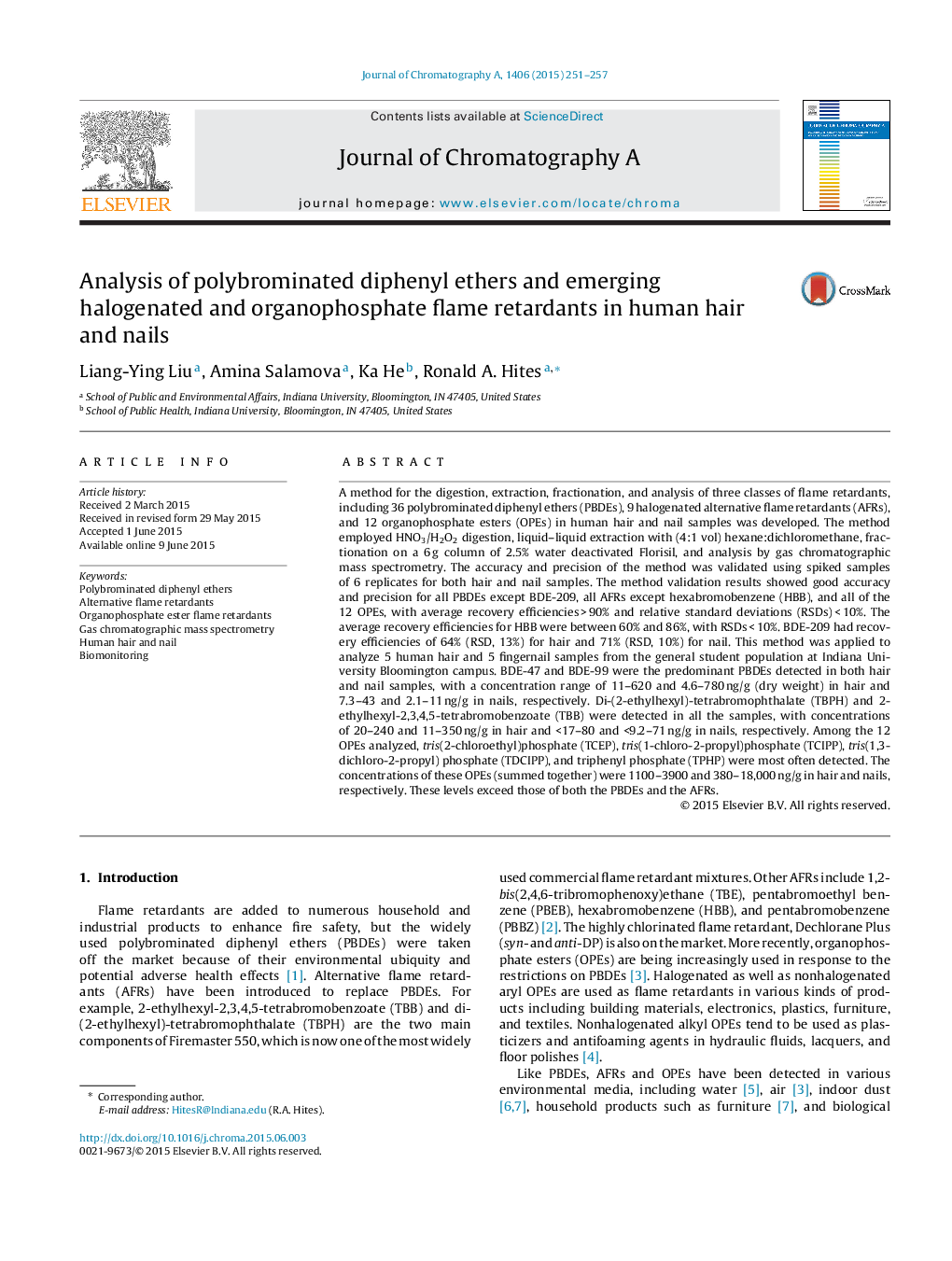| کد مقاله | کد نشریه | سال انتشار | مقاله انگلیسی | نسخه تمام متن |
|---|---|---|---|---|
| 1199249 | 1493520 | 2015 | 7 صفحه PDF | دانلود رایگان |
• A method for the simultaneous analysis of PBDEs, AFRs, and OPEs in human hair and nails was developed.
• The developed method is novel and sensitive for 57 environmentally relevant flame retardants.
• Both restricted and emerging flame retardants were detected in hair and nail samples by gas chromatographic mass spectrometry.
A method for the digestion, extraction, fractionation, and analysis of three classes of flame retardants, including 36 polybrominated diphenyl ethers (PBDEs), 9 halogenated alternative flame retardants (AFRs), and 12 organophosphate esters (OPEs) in human hair and nail samples was developed. The method employed HNO3/H2O2 digestion, liquid–liquid extraction with (4:1 vol) hexane:dichloromethane, fractionation on a 6 g column of 2.5% water deactivated Florisil, and analysis by gas chromatographic mass spectrometry. The accuracy and precision of the method was validated using spiked samples of 6 replicates for both hair and nail samples. The method validation results showed good accuracy and precision for all PBDEs except BDE-209, all AFRs except hexabromobenzene (HBB), and all of the 12 OPEs, with average recovery efficiencies > 90% and relative standard deviations (RSDs) < 10%. The average recovery efficiencies for HBB were between 60% and 86%, with RSDs < 10%. BDE-209 had recovery efficiencies of 64% (RSD, 13%) for hair and 71% (RSD, 10%) for nail. This method was applied to analyze 5 human hair and 5 fingernail samples from the general student population at Indiana University Bloomington campus. BDE-47 and BDE-99 were the predominant PBDEs detected in both hair and nail samples, with a concentration range of 11–620 and 4.6–780 ng/g (dry weight) in hair and 7.3–43 and 2.1–11 ng/g in nails, respectively. Di-(2-ethylhexyl)-tetrabromophthalate (TBPH) and 2-ethylhexyl-2,3,4,5-tetrabromobenzoate (TBB) were detected in all the samples, with concentrations of 20–240 and 11–350 ng/g in hair and <17–80 and <9.2–71 ng/g in nails, respectively. Among the 12 OPEs analyzed, tris(2-chloroethyl)phosphate (TCEP), tris(1-chloro-2-propyl)phosphate (TCIPP), tris(1,3-dichloro-2-propyl) phosphate (TDCIPP), and triphenyl phosphate (TPHP) were most often detected. The concentrations of these OPEs (summed together) were 1100–3900 and 380–18,000 ng/g in hair and nails, respectively. These levels exceed those of both the PBDEs and the AFRs.
Journal: Journal of Chromatography A - Volume 1406, 7 August 2015, Pages 251–257
